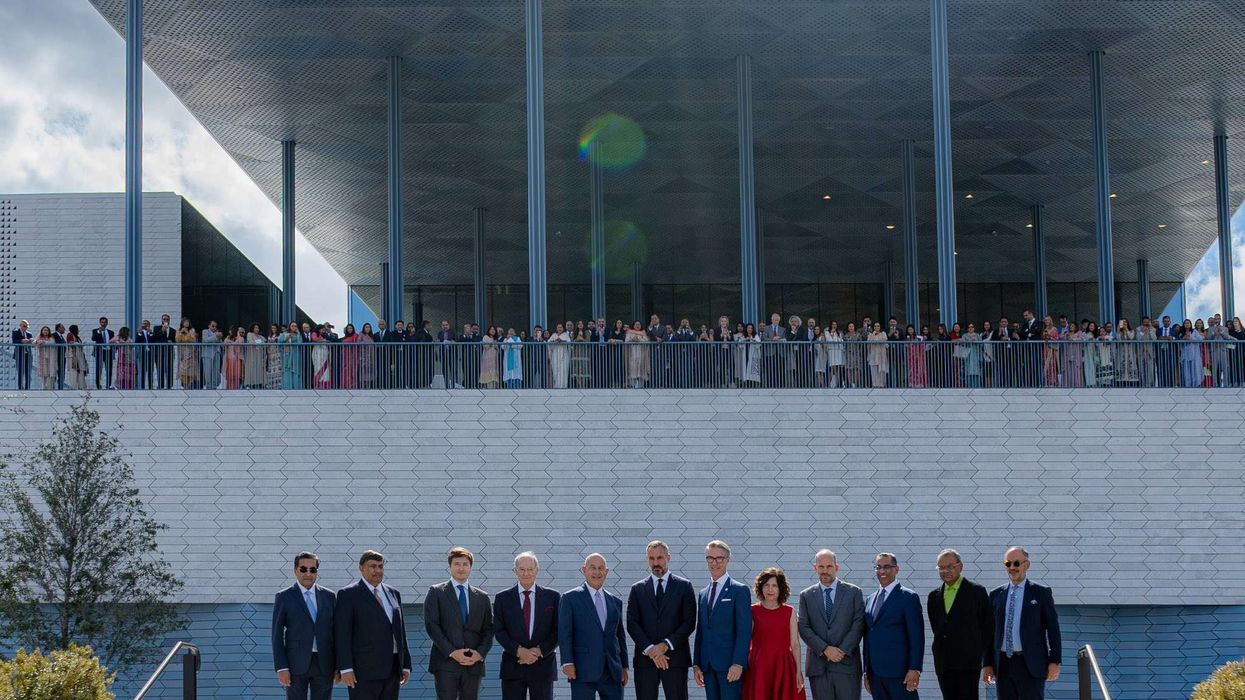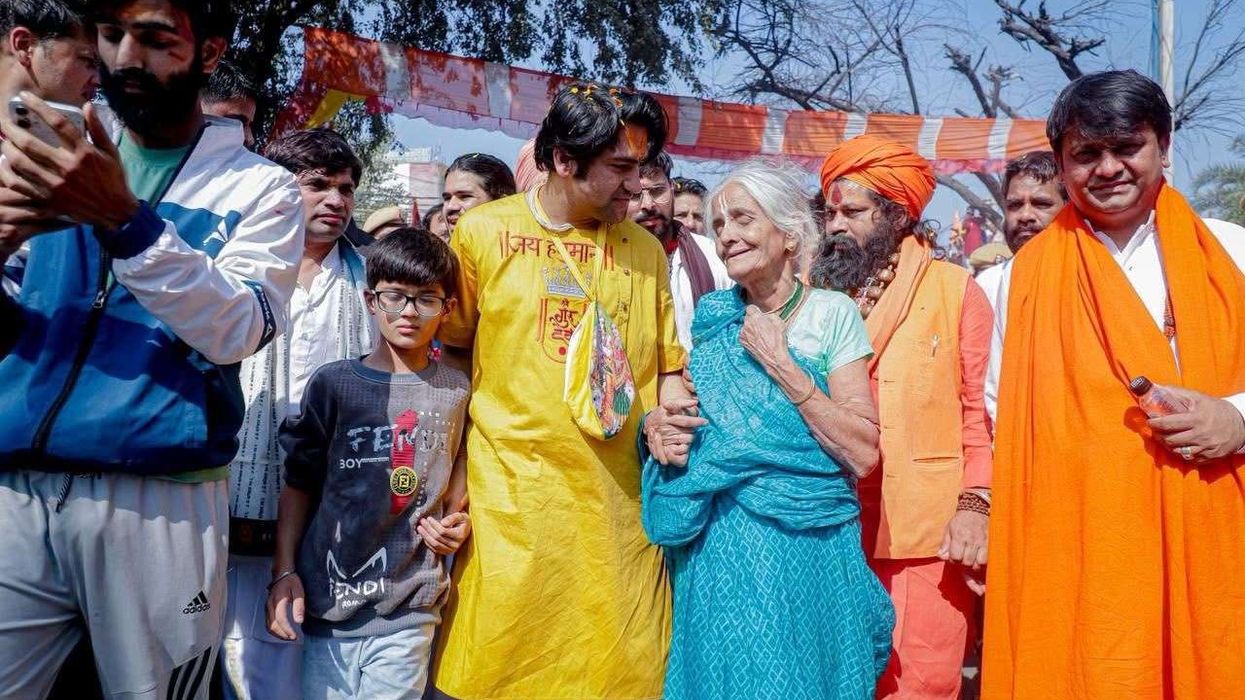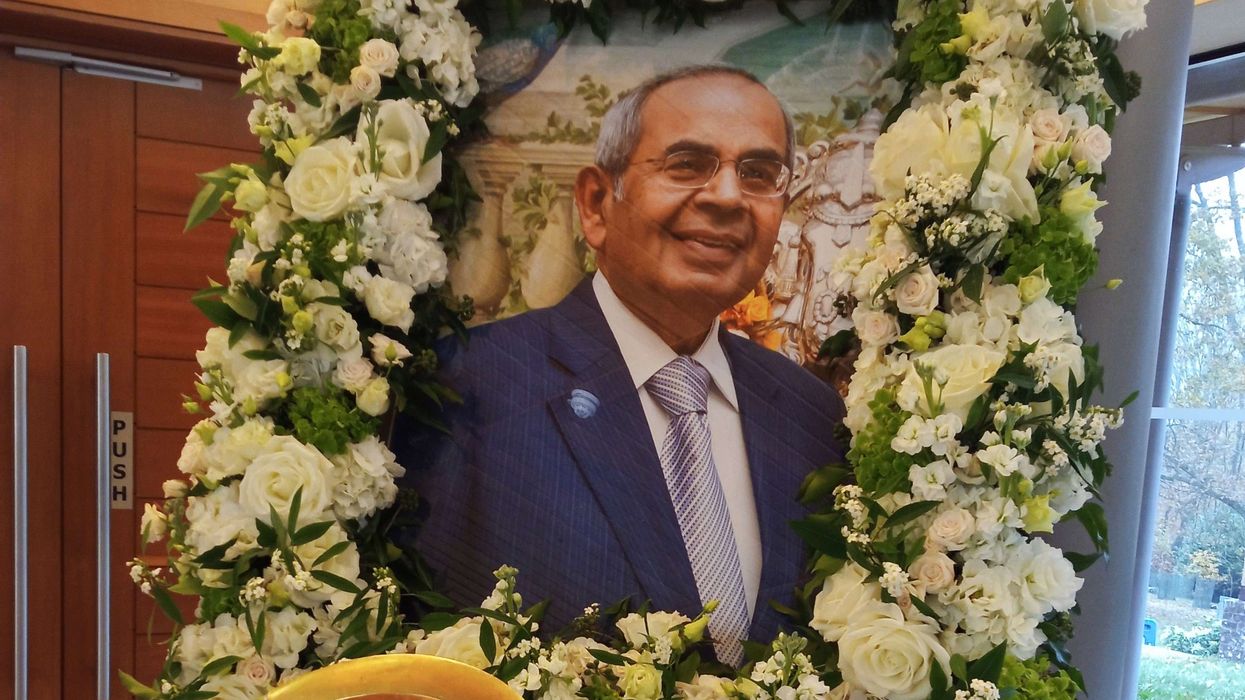by LAUREN CODLING
IF YOU were awarded $1million, what would you do with it?
If you’re anything like north-London teacher Andria Zafirakou, you’d use it to fund an arts initiative helping disadvantaged students across the country.
Zafirakou, an arts and textiles teacher at Alperton Community School, north-west London, received $1million after she won the prestigious Global Teacher Award in 2018. Held annually, prize-winners are honoured for their outstanding contribution to the teaching profession.
After a whirlwind few weeks (in which she met then-prime minister Theresa May and appeared in a number of national newspapers), Zafirakou decided to use the money to fund her brainchild - Artists in Residence (AIR). In short, the programme aims to bring creatives into schools across the country to enable them to inspire and connect with young people. By working with musicians, artists and designers, the scheme hopes to offer students an opportunity to engage with the arts, develop practical skills and offer an insight into potential careers.
“For a young person to go back to their parents and say they want to be an illustrator or an actor, and this is how you can do it, is a powerful conversation to have,” Zafirakou, a mother-of two, told Eastern Eye. “It is helping young people aspire to carry on in their career in the arts, as well as experiencing it.”
AIR was inspired by Zafirakou’s frustration of the push-back against art in many schools curriculum. For instance, she found many parents were unwilling to let their children engage with art subjects as they thought job opportunities would be limited. By connecting artists directly with students, the Londoner saw an opportunity to widen job prospects and improve art curriculums in schools.
Today, the programme has seen highly respected artists engage with students from a range of backgrounds and cultures across London. AIR has a substantial waiting list of schools that are eager to get involved and responses (from both children and teaching staff) have been wholly positive.
Students Prakruti Pindolia, 17, and Adelina Ciobanu, 15, both got the chance to work with celebrity make-up artist and stylist Cinta Miller earlier this year. The girls participated in a series of textile workshops with Miller, which saw them create garments from recycled materials.
Prior to the workshops, Pindolia admitted she did not take art seriously. However, meeting Miller changed her view on the opportunities the arts can bring. “Seeing what (Cinta) does, you realise it is a serious industry out there,” she told Eastern Eye. “I didn’t think the arts were that serious, because where would you get with it? But meeting someone like Cinta, who meets lots of famous people and enjoys the things she does in her work…it really showed me you can go into a successful job in the arts.”
And although Ciobanu has her eye on a career in the police force, the opportunity has seen her take away valuable skill sets she can apply to her preferred job choice. “Textiles will help me as it has taught me problem-solving skills and how to work under pressure,” she explained. “That can be applicable to other things as well.”
Due to its success, it is expected to roll outside of London in the new school term. The programme targets schools in deprived areas so students who may not usually have the opportunity can benefit from AIR’s facilities. Zafirakou’s own students at Alperton Community, where she has worked for more than 14 years, have been involved in the project.
Another workshop saw theatre director Michael Attenborough join students, including 17-year-olds Jasmeen Torgul and Radhika Samji, to discuss his work on plays such as Shakespeare’s Othello.
The pair, who are both studying English literature, found great benefit from the workshops as it allowed them to see Shakespeare from a different perspective. “Hearing (Michael’s) opinion on Shakespeare and the dynamics was refreshing because we were able to get some insight into the characters as people,” Torgul told Eastern Eye. “We read them as characters, but he sees them as people in the show.”
Samji, who hopes to pursue a profession in psychology, agreed. “Michael was showing us how actors express themselves with the material and we were able to see a different side of it - it really enhanced my perspective on the whole thing,” she said.
Despite their positive experiences within the workshops, the arts is still not an easy option for the girls. Torgul, in particular, emphasised the expectations her ethnic community has had an impact on her goals for the future. When she was younger, for instance, she had an interest in acting, but was dissuaded against pursuing it by her family.
“I was never encouraged to develop my skills when it came to being a creative,” she said, adding that academic subjects are deemed more important.
Even now at an older age, she is slightly wary of a push-back from her family if she showed interest in an arts career.
“My mum would disapprove, but the main reason for that is because she, and people from her generation, aren’t aware of the opportunities there are,” she said. “I feel coming from a generation of immigrants, my mum might think ‘if you do medicine or sciences, you’ll have better job prospects, and you’ll be more respected in the community.’”
Both Ciobanu and Samji revealed similar stories – their parents were slightly reluctant to let them follow the arts, as they feared it could stunt their job opportunities. On this, Zafirakou can relate to her students.
Growing up in north-west London to Greek-Cypriot parents, she also faced disapproval when first approaching the arts as a career choice. When Zafirakou decided upon an art GCSE during her teen years, her parents wouldn’t allow her to take the subject. “I lasted two weeks and then I went to my art teacher and asked her to help me, so the school called my parents and said they wanted me to pursue it,” she recalled. “I had that brave moment in my life which many of our kids can’t.”
Looking back, Zafirakou believes her mother and father were reluctant as they were fearful of the lack of job opportunities if she practised the arts. She blames the assumption that the most ‘successful’ jobs are in medicine, law and business. Awareness is a key factor too, she said.
“Do students know anyone who is an architect or a fashion designer? Probably not,” she said. “There aren’t many people in the immediate family who do these roles, so it is difficult for family to connect and encourage their children to aspire with these careers.”
It has been clear for some time that the arts is being overlooked in schools.
A BBC survey last year suggested that the creative arts subjects were being cut back in many secondary schools in England with nine in every 10 respondents admitting they had cut back on lesson time, staff or facilities in at least one creative arts subject. Additional research by the Education Policy Institute showed a decline in the proportion of pupils taking at least one arts subject at GCSE level. In 2016, it reached 53.5 per cent – the lowest level for a decade.
In part, Zafirakou blames the English Baccalaureate (EBacc). First implemented by then education secretary Michael Gove in 2012, the EBacc measures the percentage of students in a school who achieve top grades in traditional academic GCSE subjects. None are art subjects.
As all schools have a target to reach for the EBacc, Zafirakou believes some feel pressure to push students to take those particular subjects. Therefore, it can have a direct impact on those who take creative lessons.
When Pindolia’s elder sister was choosing her core subjects, for instance, she was pressured to drop her art subject so she could obtain the EBacc. “She did a language instead,” Pindolia explained. “She didn’t even want to do it, but she felt forced into it by her teachers.”
Discussions over the EBacc are important to Zafirakou, who is keen to see radical change in how the government promotes it. “If we can add an arts group in that package or if we can remove that EBacc pressure, then I think that would make a huge difference,” she said.
Asked what she would say to authorities who do not believe creative subjects are vital within education, Torgul pointed out the impact art has had on the world. Throughout history, she said, it has always been pivotal. “I feel it is important to point out the importance of art and it isn’t just something you do as a hobby,” she said. “I always got told as a child if I wanted to be a fashion designer or an actor that I could do it in my spare time when I became a doctor. It is very important for people to know that you can be an important person, be proud of yourself and still do an arts subject.”
To find out more, see: https://www.artistsinresidence.org.uk












